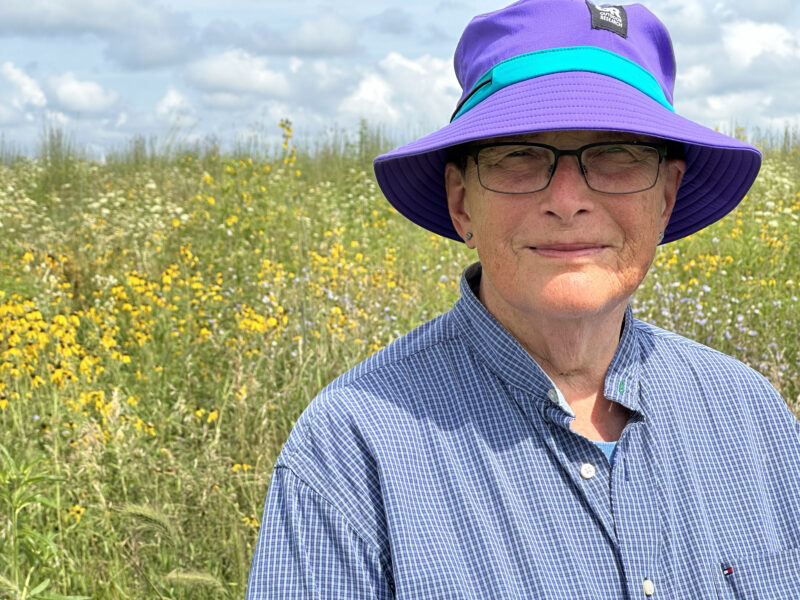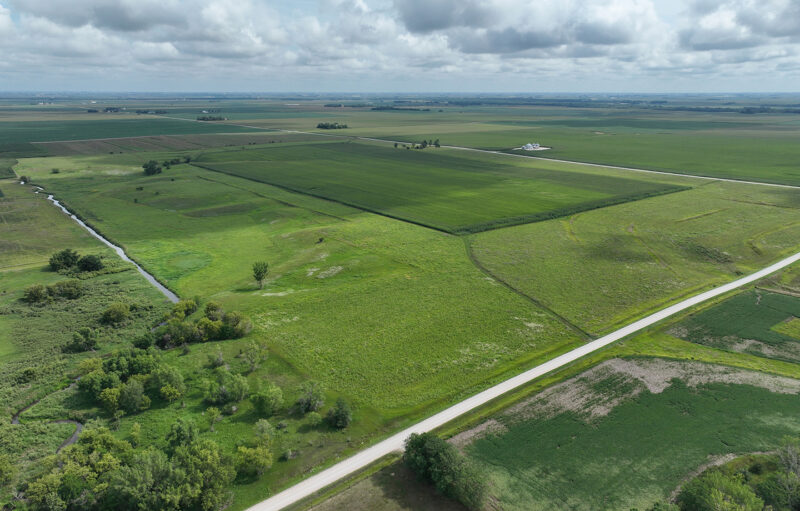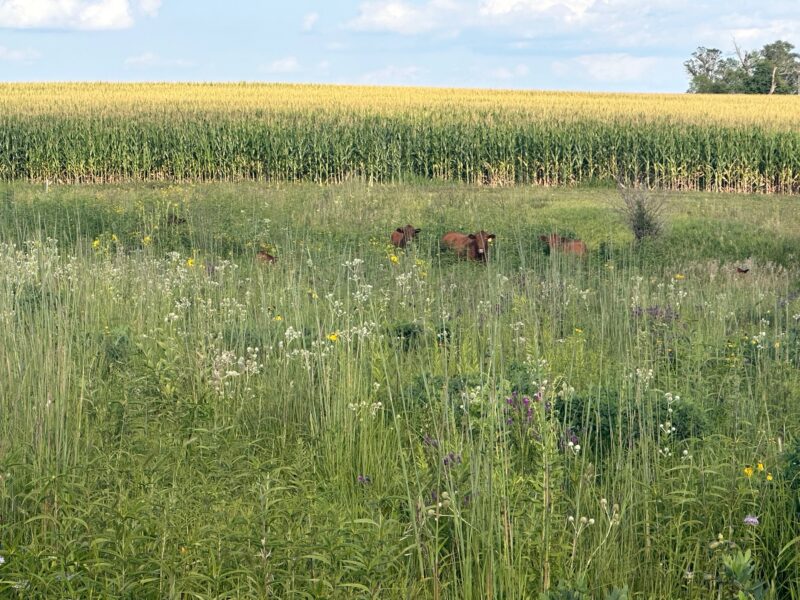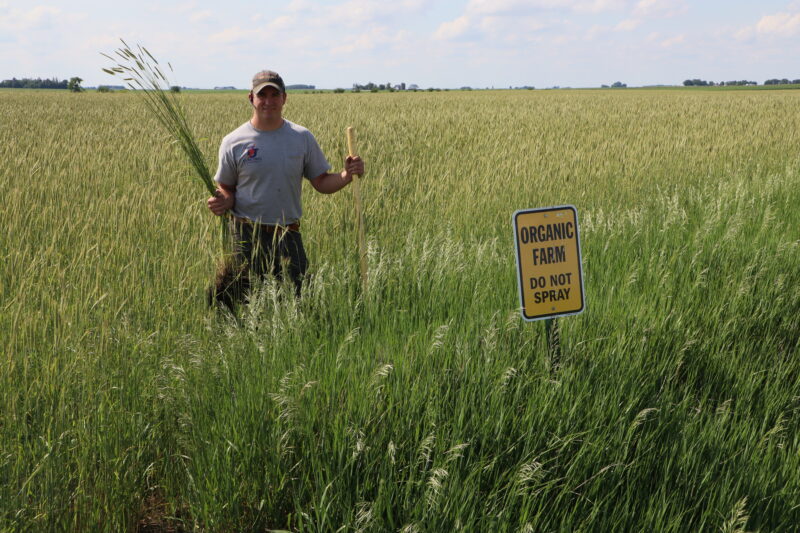Climate Land Leader Helen Gunderson recently shared this celebratory update from her farm in Pocahontas County, IA.

“Following my grandfather’s death in 1956, our family no longer raised cattle on our land. I recall some of our early farm tenants having herds, but for over 40 years there have been no cattle on Gunderson land.
I inherited some of the land and in the late 1990s began managing it myself. As my vision for stewarding and protecting the land grew, I gradually arranged to give 60 acres that included the pasture and some lowland to Iowa Natural Heritage Foundation as an outright gift in 2011.
In 2016 I gave the remaining 180 acres to INHF as part of a reserved life estate, and we put in 77 acres of Conservation Reserve Program (CRP) pollinator habitat. The 77 CRP acres are shaped like a wooden picture frame surrounding an organic crop field.

INHF has been a great partner in stewarding the health of all the land. And now the young tenant that I have, Abram Frank, has introduced his small, but growing, herd of cattle to the pollinator habitat. Last week, Abram put electric fence around a 15-acre area and brought a huge water tank on flatbed to the area.
Today, Abram moved his herd into the area and sent me this photo.

I will incur a 25 percent reduction in CRP rent, but this development is worth every penny of continuing to make these 220 acres into a model farm. I could not be happier. The subject line of Abram’s email was ‘A 1000 words.’ He started calling the farm the Butterfly Farm as soon as he started farming it for me. Vision and attitude are worth a lot.”
We asked Helen how she would encourage another farmer to consider leveraging federal funding to add conservation on their farm.
“Pocahontas County or any county cannot afford to have border to border corn and bean dominance. They might talk about productivity, but in the long run, that’s going to spoil agriculture. My dad went ‘fencerow to fencerow’ on our family land and wasn’t into conservation. But farmland is part of the ecosystem – it can’t be out of balance.
You don’t need to be a specialist to explore conservation options. When you see a workshop on integrating prairie strips or grazing cattle on perennials, go to it! You’ll meet people you can learn from, and you can find out about funding opportunities.
Start out in small increments. It’s been 25 years since my first CRP project – 20 acres of lowland that often got flooded along Beaver Creek. As I realized that it probably shouldn’t be in cropland, I learned about CRP and made arrangements to put that land in the program. This was in the late 90s. Next I put in CRP as a buffer strip on another farm. I started with the most obvious things, things that could be done and didn’t seem like that much of a financial risk. Then as I started learning about regenerative agriculture, I realized I was just scratching the surface. I became intrigued — what more could I put into permanent plantings? That led me to put the 77-acre border around the organic crop field.

My current tenant began farming for me in 2019, and after thoughtful consideration and research, began herding cattle on the land this summer. I am excited about this combination of having a crop field in the middle and being able to graze cattle in the pollinator habitat. It’s about the combination: the pollinator habitat isn’t an isolated, novel thing. It’s made it into a beautiful and beneficial place, and it works well for Abram’s grazing.
The U.S. agricultural system has an entrenched history of making production agriculture its top priority at great risk to the environment and rural communities. In my home county from 1995 to 2021, the USDA invested $433 million in commodity programs, crop insurance subsidies, and disaster payments while investing only $36 million in conservation. It is urgent that there be a quantum shift with much more USDA funding for federal conservation programs. They are key avenues for promoting soil, water, and air quality as well as biodiversity in pursuit of counterbalancing and correcting the trajectory of the prevailing system.”
After sending this update, Helen wrote that soon after Abram moved his herd into the pollinator habitat, he got a call from the county Farm Service Agency (FSA) director who shared that there would be no reduction in CRP rent, because the USDA had determined that Pocahontas County was in a drought serious enough to allow farmers to harvest their CRP ground for forage without rent reduction.
Read more about Helen’s life and land stewardship here.